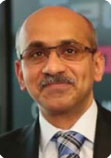Funny things, cities. After wandering out of Africa around one hundred thousand years ago, our ancestors seem to have been perfectly happy existing in hunter-gatherer communities until something like 7000 years ago, writes M2M Now’s Alun Lewis.
Then, something happened to draw us – at least some of us – together more permanently, firstly in ritual-focused sites like Çatalhöyük in today’s Turkey and, shortly later, into what we can formally class as proper cities in Mesopotamia, today’s Iraq.
While cities have risen – and equally regularly fallen – over the succeeding millennia, it’s only in the last few years that we’ve reached a critical tipping point in the human story. Last year, the United Nations announced that 54% of the world’s population now lives in urban areas, and that figure’s expected to increase to 66% by 2050, with nearly 90% of that rise concentrated in Asia and Africa.
This shift in population densities is going to only exacerbate the already huge pressure on infrastructure and resources in developing countries as these mega cities and their inevitable slums continue to expand. Indeed, this year’s Global Risk report from the World Economic Forum in Davos identifies that rapid and unplanned urbanisation in developing countries is one of the biggest destabilising factors facing us, creating situations for social unrest or disease epidemics that can then quickly spread.
Developed countries too face their own problems as urban economies react to globalisation through the offshoring of large industries, so leading to ‘rustbelt’ conditions, while environmental changes will threaten cities built – as so many were – close to rivers and seas. On top of this, even developed economies aren’t protected from shifts in the availability of basic necessities like water as many states and cities in the US are already finding out.
As many high tech marketeers have already recognised – and their adverts have been appearing for a good few years now in the world’s business, science and technology press – Smart City techniques could mitigate these problems. Or can they?
Machines for living in ?
It’s an obvious truism that our buildings and public spaces reflect our local cultural and political values, down to the shape and size of family units and notions of privacy and individuality. As a result of this, there’s been a long running debate in the smart city community about taking either topdown or bottom-up initiatives – or finding some mix of strategies appropriate to each urban setting. After all, there are numerous urban hellholes scattered around the world that have equally resulted from both socialist centralised planning and from unfettered free market principles.
So how do you start defining something as amorphous, alive and implicitly perverse and varied as its own human inhabitants ?

Saverio Romeo, principal analyst, Beecham Research, sees three main ways to classify smart city projects: “Firstly, you can generally contrast vertical versus horizontal approaches. A typical vertical projects focuses on a specific city system such as smart parking. Then there are horizontal projects where the entire city is seen as a system of systems where the role of IoT platform as urban OS or intelligence backbone is fundamental. These definitions are blurring however, with some projects becoming multi-vertical across different systems such as smart lighting, surveillance and pollution monitoring all done together. You can imagine a continuum from pure vertical to pure horizontal – with the complexity of the project increasing along the continuum. This has obvious implications for security in horizontal projects compared to vertical ones.
He continues, “Then there are open versus controlled approaches though the distinction becomes more political than technical, revolving around data ownership and data usage. Projects such as Bristol is Open, and other European ones are open-based. Smart Dubai by contrast is based around the control of data. Finally, there’s the issue of new cities versus transformational approaches. South Korea’s Songdo is the largest new city designed with a horizontal approach to become a fully connected and intelligent environment. By contrast, the large majority of smart city projects in Europe revolves around the idea of adding a digital layer to existing ones.”

VP of Global
Transformations at Tech Mahindra
These perspectives are echoed by Upendra Dharmadhikary, VP of Global Transformations at Tech Mahindra, a company currently involved in many smart city projects around the world. “Neither approach if executed in isolation will succeed on its own. A top-down approach typically relies on a network of sensors feeding into a central grid so that key decision makers – civil servants and administrators – can create projects. However, this fails to address the inclusivity of the citizens and local businesses and what they are willing to adopt.
“There are however,” he adds, “also risks with a completely bottom up approach. Relying on citizens and citizen forums to identify key challenges and communicate with authorities through social media and other means could pose challenges for city planning as there would be no control on aligning these projects with the wider vision – or the resource constraints that confront most cities.”

For Dr Jon Lewis, director of strategy at Telensa, both approaches have their advantages – and caveats: “While Telensa’s involved in projects of both types, the majority of Smart City ones tend to be more at the pilot stage, while specific ones – such as working with municipal parking or lighting departments – are seeing commercial deployments at scale. However – they must use open industry agreed standards as it’s only through the adoption of standards that the industry can effectively scale, rather than fall into the trap of having a range of competing proprietary technologies.”
Standards for – not of – living
And it’s around standards – a much abused and ill-defined word – where some of the headaches are already emerging with a veritable alphabet soup of initiatives, frameworks, platforms, partnerships and councils all already slopping around the foundations of the digital building site. Some such as HyperCat – already being adopted outside the UK – are essentially catalogues that allow data, devices and applications to find one another; while oneM2M looks more like a more traditional standard, based on the historic connectivity lineage of its founders. The ITU has also recently added its voice to the debate, pushing its potential role in this. On top of these could also be added the smart cities work being done by the British Standards Institute in defining a common lexicon and framework for the smart city operating environment, similar in many ways to the groundbreaking work done by the TM Forum in OSS/BSS some years ago.
In fact, the latter comparison is an apt mirror. Telcos at that time were trying to merge radically different business and technology silos to cut costs and add new functionalities – and faced extreme internal competition for resources and strategic power. You might not be able to fight City Hall, as the American saying goes, but there’s often more than enough blood spilt inside them in the fight for power and voter trust.

Graham Colclough, partner at UrbanDNA, a smart cities consultancy, gives an overview of some of these issues: “As almost any ‘smart’ strategy is almost inevitably going to involve bashing silo heads together – amongst many other things potentially subversive for the municipal status quo – the absence of any top down steerage can lead to some very messy outcomes indeed. There are many once frontrunner cities who now realise they’ve been experimenting with ‘pilots’ positioned by – and often funded by – big industry that are now wondering what to do with the unwieldy Frankenstein monsters that they’ve created! The whole market is going through a continued transformation, so not only is the agenda working across silos, it’s also changing the value equation too. Leadership is thus vital, as is standardisation and demand aggregation involving collaboration and joint working.
As Colclough observes, “What leaders need – particularly given the multiple pressures they’re under – are some very clearly evidenced gains to convince them and de-risk often ill-defined propositions, plus some practical ‘how to’ guides on what to do. More fundamentally, they need to think through what exactly ‘smart’ means in their particular context. For a start, the pooling and sharing of data is indeed a real challenge, but there are a few things afoot to help with this such as the European Innovation Partnership (EIP) on Smart Cities and Communities.
The EIP recently launched a demand-side survey to ask cities if they had an ‘urban platform’ and if so what was their experience – and if they didn’t have one, then why not? Funding constraints, lack of capability and the challenges of crossdepartmental working were frequent barriers to progress – perhaps a reason why more than 70% of the responder cities had not put in place a city-data platform. To support the take up of urban platforms, we recently signed an MoU, together with an initial group of around 15 industry players and Commissioner Oettinger.”
Creating the digital Agora for the community’s data
Here, Tech Mahindra’s Dharmadhikary suggests: “A shared Data Hub is essential for collecting and managing data from a variety of sources. The sources of data include historical and real time transport traffic data, energy usage, satellite data, water usage, river level, security data and video surveillance of the city. A user-profile driven analytics engine, which focuses on use cases relevant to the different stakeholders, forms the backbone of this integrated dashboard. One interesting example of a unified smart city command centre is Tech Mahindra’s implementation at Mahindra World City Jaipur, India, which not only provides a unified view of the smart city components but also delivers important insights relevant to city planners and to local businesses and citizens.
He adds, “The MK Smart initiative in Milton Keynes in the UK is another important example of how data analytics can be used to meet urban challenges, using insights from a ‘mash up’ of traffic monitoring and surveillance data such as: road traffic, pollution and road conditions, electricity demand and supply and the impact of electric cars; parking space management and waste management to reduce truck rolls.”

Before you can pull this information together however, the data needs to be captured and different perspectives exist on how this is best achieved. Brandon Davito, Silver Spring Networks’ VP of Smart Cities, suggests, “In any city infrastructure upgrade, the goal is to cause the least amount of disruption as possible – and a horizontal, outdoor ‘network canopy’ that can link to any critical infrastructure device or asset can alleviate that pressure. This is especially important as city procurement processes generally require multiple vendors. By choosing a single, open platform capable of supporting multiple smart city applications, cities gain immediate benefits and build a path toward future energy and operational savings. Furthermore, a multiapplication network such as Silver Spring’s enables the network operator to not only connect the street lights, but also establish a network canopy upon which additional smart city services can be deployed over time, such as smart parking, electric vehicle chargers, weather and air quality monitoring, digital signage, energy metering, smart water, and more.”
The city of Paris is currently implementing Silver Spring’s IPv6 network to connect street lights and traffic controls across the city to help reduce public lighting energy consumption by 30% over the next ten years. Copenhagen, often regarded as the world’s most sustainable city, is also looking to Silver Spring to deploy a citywide canopy network to connect more than 20,000 street lights and create a platform for future smart city services.
Extracting usable information
AGT International is one company that’s been deeply involved in the Smart Cities space for a number of years and has recently joined one EU Smart City project, providing advanced IoT Analytics for Cologne as part of the wider five year GrowSmarter sustainable cities project. This aims to achieve a 60% saving in primary energy consumption costs, a similar reduction in emissions from buildings and traffic and increase the proportion of renewable energy supplied to 60% by 2020. Participation in this project follows the key role AGT played in the recently completed PeerEnergyCloud initiative, a smart grid project supported by the Federal German government.

Gadi Lenz, AGT’s Chief Scientist, observes, “Smart Cities is an overloaded term – and so often is analytics as this can range from anything from presenting simple pie chart displays to the kinds of advanced anomaly detection systems that we deploy with some of our client cities to spot emerging traffic patterns that will lead to congestion.
One problem however that often happens with Smart City projects is that they involve highly siloed departments and functions where tenders are issued by each in turn. There’s definitely a need for a kind of canonical architectural framework such as Europe’s FIWARE that’s able to unite these disparate sources and systems and make it simpler to extract actionable information more quickly and dynamically.”
Europe certainly seems well advanced in a global context with the FIWARE initiative as Beecham’s Romeo explains: “Europe’s moving from a government-centric approach towards a more public-private partnership one and the EU FP7 ‘Smart City and Communities’ and now the Horizon 2020 ‘Smart City and Communities’ have done a good job. The idea of a Digital Officer in a local authority is not a niche idea anymore – or that they should be an expert in the field and not simply appointed by the political class.”
As these digital urban visions of the last few years start to be realised, it’s perhaps good to remember that the very word Utopia – invented almost exactly five hundred years ago by scholar Thomas More as the title for a social satire he’d written – is actually a pun in Ancient Greek. Rather than eu-topos – meaning good place – he used ou-topos, meaning no place. Perhaps it’s an inescapable part of the human condition to always be seeking a perfect place to live?










